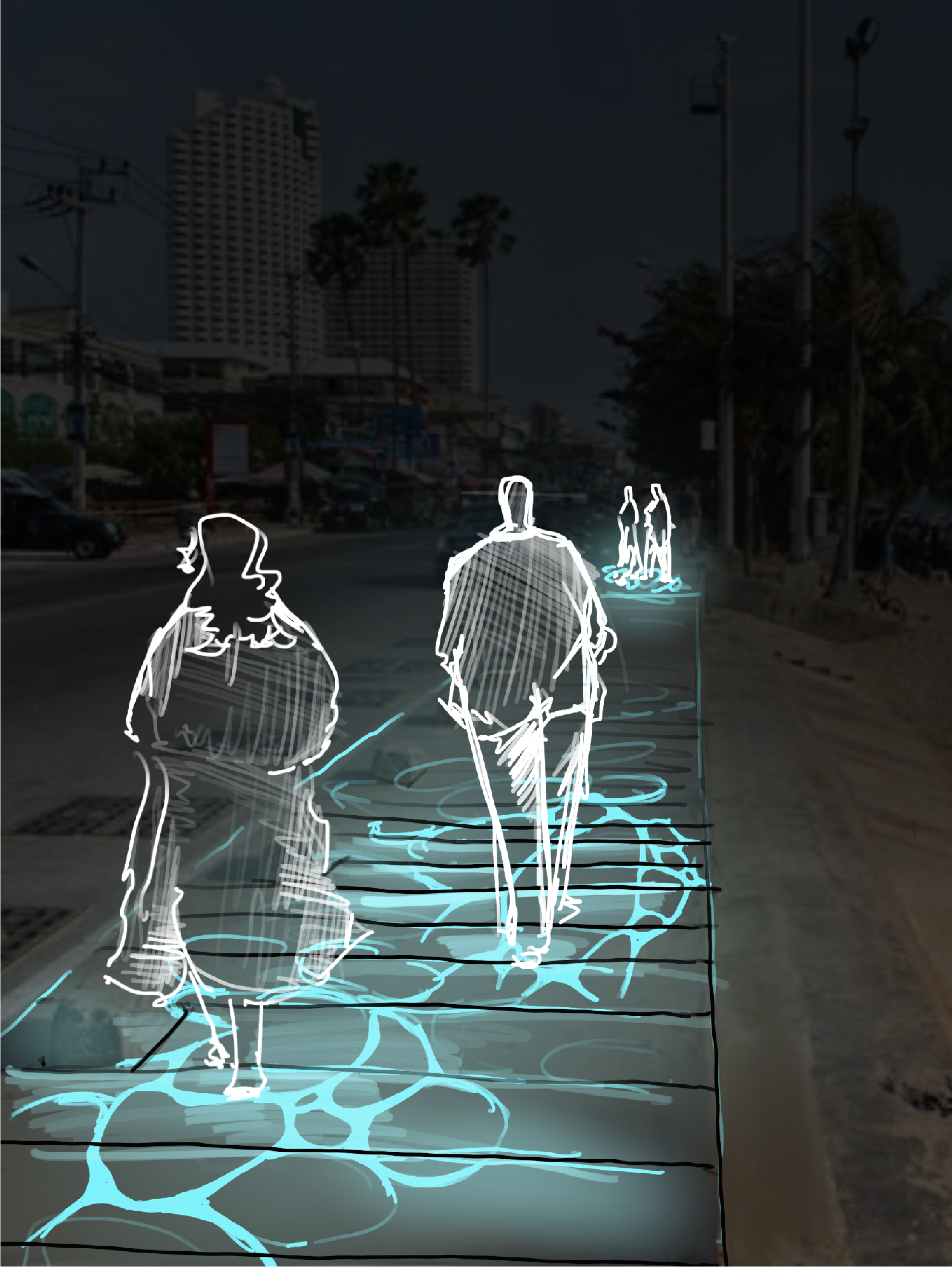path of the tidal light

Category
Daylight investigations - Region 4: Asia and Oceania
Students
Pranont Theprugsa
Prat Rojanaparnich
Wirachai Punjamasakul
Teacher
Apiparn Borisuit
School
Chulalongkorn Mahawitthayalai
Country
Thailand
Download
Download ↓
Pattaya, Thailand is a seaside city known for beautiful beaches surrounded by the Gulf of Thailand and fantastic nightlife. At night, the streets always have lights, creating excitement for tourists. On the other hand, these lights had a huge impact on every local animal, not only terrestrial but also marine creatures.
Among the marine creatures that got affected by these bright street lights are sea turtles. In the past, sea turtles have used beaches in the Gulf of Thailand as their breeding ground. But nowadays, fewer and fewer turtles have been spotted laying eggs on the beaches. This is because sea turtles rely on horizon light as their guidance of direction in the sea and these bright artificial lights confuse them to not come and lay eggs on the beaches.
Our objective is to encourage peace and coexistence between humans and nature. Increase breeding ground for the sea turtles by decreasing the use of artificial lighting, relying on the use of natural light, and lowering light pollution.
One phenomenon commonly occurs in the Gulf of Thailand is the ‘glowing seas’, which is a phenomenon when the waves glow during night time. The glowing waves are the result of the oxidation of the dinoflagellates planktons known as Noctiluca scintillans. These planktons turn seawater into green in the daytime and illuminate at night. The oxidation process is triggered by any sort-of vibration, such as the movement of waves, sands, or predators. This oxidation process made substrate Luciferin become a luminescence product called Oxyluciferin.
The outcome of this project is a device that combines the luminescent planktons and walking tiles to replace the artificial lights on coastal walkways and public areas. The planktons used are collected from the sea, nurtured in the communities’ wastewater, and reused before returning to the sea, thus maintaining the planktons’ health.
The site is called Jomtien beach which locates in the south of Pattaya city. This area is where the turtles have come to lay eggs in the past but disappeared after the beach has been commercialized with the construction of resorts, restaurants, and bars. This area also has a history of glowing sea occurrences making it the perfect place to start this project.
During the daytime, the tile turns green from the green algae called Pedinomonas noctilucae which have an endosymbiosis relationship within the cell of Noctiluca scintillans. During the nighttime, the energy that the planktons store will be converted back to light energy again when triggered with vibration. Basically, this plankton works like a bio-battery.
The way the tiles operate can be separated into two parts; the glowing part and the power source. Each footstep will send the planktons within the tiles forward onto the next tile to light and navigate the way. Furthermore, the light movement will mimic sea waves by 3D printed patterns. And any excessive force from the footsteps will be transferred to the town’s electricity-producing system, making this process energy-free and also helping create renewable energy.

































